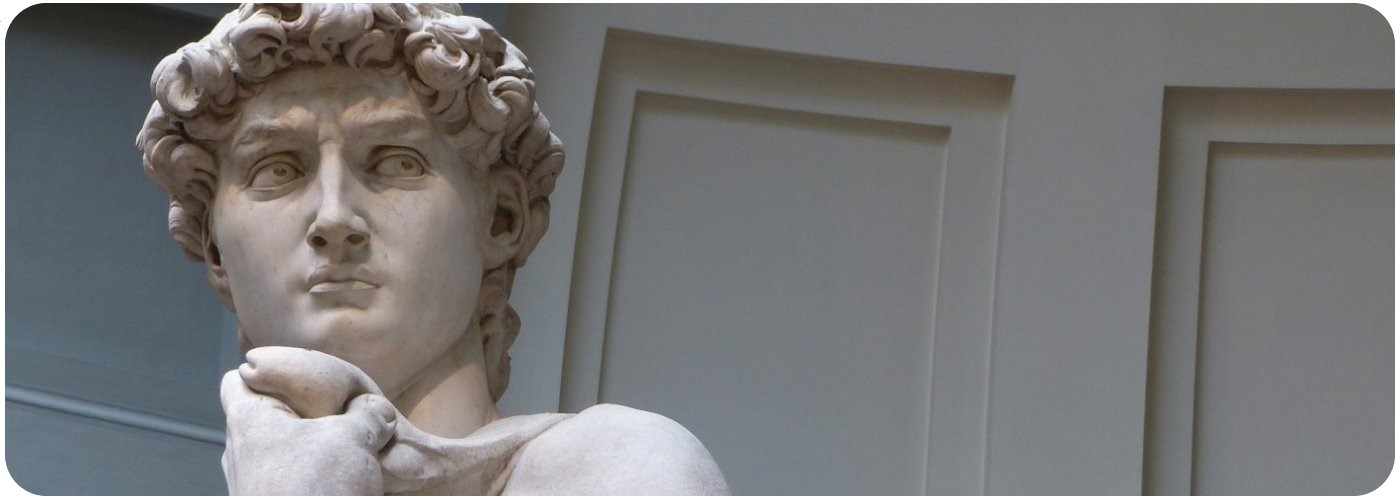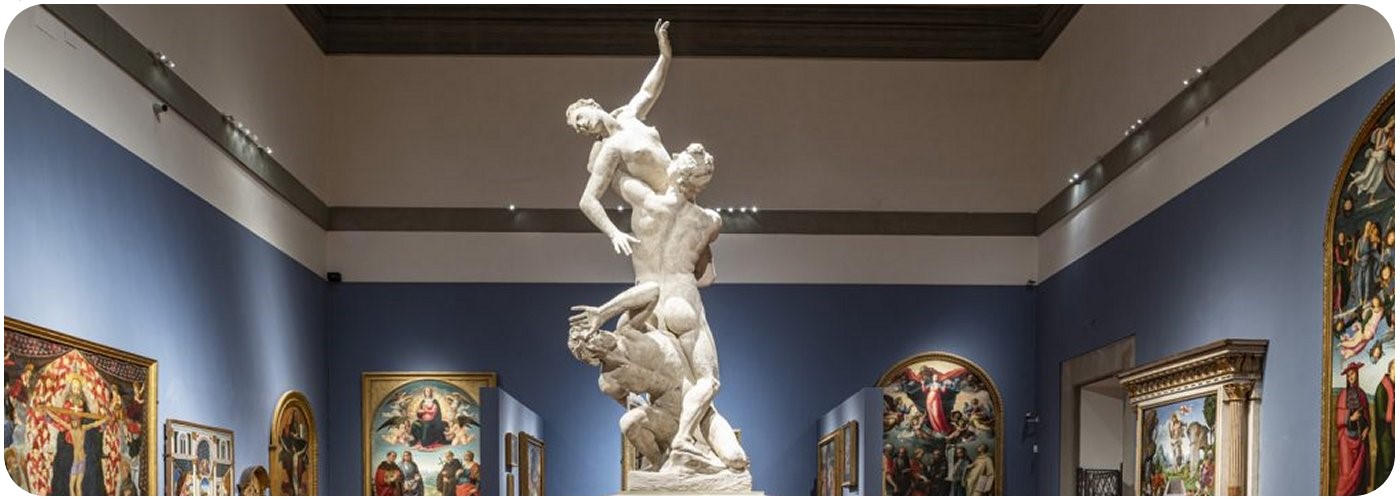The Galleria dell’Accademia
The Accademia Gallery is one of the most important Italian art museums and the fourth largest in Italy by number of visitors.
Compared to the Uffizi, the Galleria dell'Accademia is smaller and more specialized, having a large collection – mostly from the 14th to the 17th century – of paintings made by Florentine artists. It contains 7 Michelangelo’s sculptures.

The history of the Galleria dell’Accademia
Founded in 1784 by the Great Duke of Tuscany Pietro Leopoldo, the Galleria dell’Accademia was born as a place for the students of the nearby Academy of Fine Arts. Here they could find a gallery with original works and copies that could be used as models.
The first intention was to create a museum dedicated to Michelangelo with original drawings and sculptures, in order to celebrate the fourth centenary of his birth. The Galleria dell’Accademia containing 7 Michelangelo’s sculptures, is the first museum of the world per number of his works.
The most famous is the David, originally situated in Piazza della Signoria (today there is a replica). This sculpture was moved to the Galleria dell’Accademia for reasons of conservation: its outdoor location was dangerous for the statue, especially because of the weather conditions.
In the Galleria dell’Accademia you can find other Michelangelo’s works, including the unfinished Prisoners, made for the tomb of Pope Julius II and a St. Matthew statue. In 1939 a Pietà attributed to Michelangelo was found in the Barberini chapel in Palestrina, and joined the Galleria dell’Accademia’s collection; today the experts consider this attribution to be dubious.
Among the Florentine paintings from the 13th to the 16th century that you can find at the Galleria dell’Accademia there are works by Sandro Botticelli, Paolo Uccello, Andrea del Sarto, Domenico Ghirlandaio, Filippino Lippi, Perugino, Pontormo and Bronzino.
At the Galleria dell’Accademia you can also admire the original full-size plaster model of the High Renaissance Giambologna’s Rape of the Sabine Woman (whose original is at the Loggia dei Lanzi).
The Galleria dell’Accademia houses also the collection of beautiful Russian icons, collected by the Grand Dukes of the House of Lorraine, of which Pietro Leopoldo was one.

Michelangelo’s David
Considered a masterpiece of Renaissance, the David is a marble statue created by the Tuscan artist Michelangelo between 1501 and 1504. It is 5.17 meter tall (17 feet) and it represents a standing male nude, the Biblical hero David, one of the most represented subject in the Florentine art.
This statue was originally commissioned as part of a series of statues that represented prophets, to put along the roof-line of the Florence Cathedral. Michelangelo’s David replaced Donatello’s Judith and Holofernes a bronze statue that represented the theme of heroic resistence. It took 4 days to move the statue from Michelangelo’s workshop.
The David was instead placed outside of the Old Palace, the seat of the Florentine’s government in Piazza della Signoria; it was unveiled the 8th September (the Nativity of the Blessed Virgin Mary) of 1504. In 1873 the statue was removed from the Piazza della Signoria and displayed in the Galleria dell’Accademia, the replica was placed in 1910.
This statue, because of the nature of the hero it represented, soon came to symbolize the Republic of Florence because it was seen as the symbol of the defense of civil liberties. At that time Florence was an independent city-state threatened by the hegemony of the Medici and by the rival states.
If you participate in one of our walking tours, you can ask our guides for all the information to visit it, to admire the original of Michelangelo's David live.
